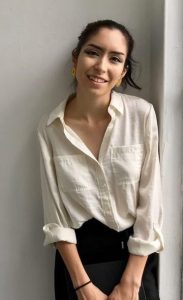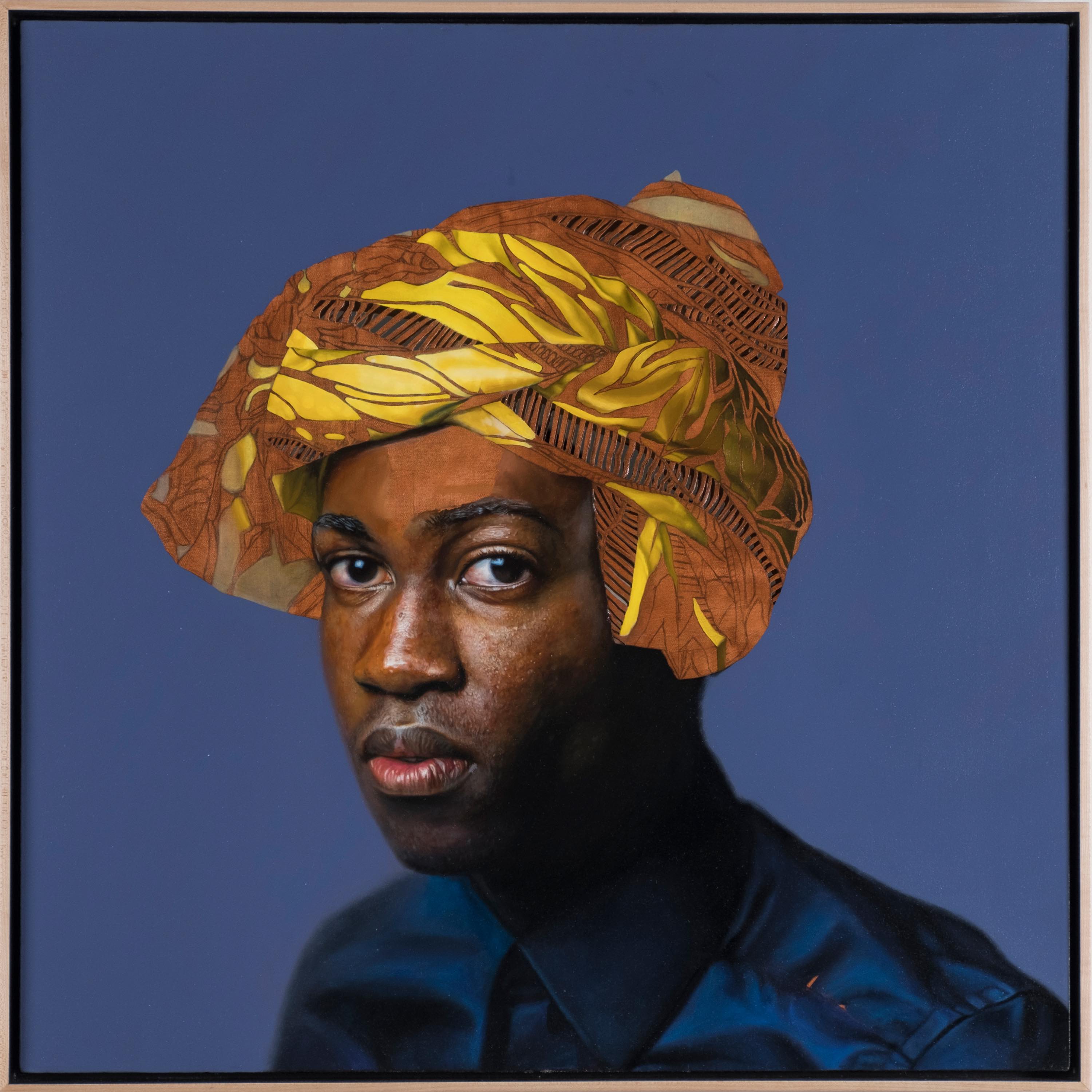A cultural scene is only as strong as its young creatives. It continues to grow thanks to the up-and-coming artists who push boundaries and explore new creative territory. The Phoenix art scene plays an important role in providing opportunities for young artists to grow and find success. Young artists who utilize the existing community as a resource are the ones who usually thrive. JAVA has selected three talented artists to watch who have worldly art practices yet are distinct to Phoenix. Young artists don’t just develop in a vacuum; they are shaped and influenced by the existing artists and the environment around them.
Sam Fresquez, 21
Sam Fresquez was born and raised in Phoenix. Her grandmother owned an art supply store, exposing her to the arts at a young age. Fresquez attended the Metropolitan Arts Institute, a visual and performing arts charter high school in downtown Phoenix, which furthered the early development of her work. She was accepted to several nationally prestigious art schools, but she chose to stay in Phoenix. “I definitely thought I was going to go out of state for college, but I’m happy I didn’t,” she said. This choice has been integral to the content of her art, as her network here in Phoenix grows.
Fresquez’s Mexican-American heritage has had an indelible influence on her work. Her family has resided in the Valley for generations. Her mother is an educator, and her father does public relations for NASCAR’s Hispanic audience. “My parents and grandparents were not allowed to speak Spanish at school,” she said. “For a really long time, it was against the law to speak Spanish at schools in Arizona.” This has made her keenly aware of the power of language and its fraught history in the state.
Fresquez’s most iconic work thus far is her calligraphy. She interviews people, employs poetry and uses anything linguistic that inspires her. She then creates highly intricate characters that she renders onto wood, metal or fabric. The aesthetic beauty of her work is equaled by her eloquent touch with politically charged topics, such as gender, religion and race, which are infused throughout.
The work vibrates with the freshness of now, but Fresquez is quick to acknowledge those that came before her. “I think it’s really important to have respect for traditional craft-making,” she said. This blend of young and old, modern and traditional informs her work with a sense of timelessness. The collaborative nature of art has motivated her to connect with others. “I feel like the community aspect is one of the most important parts about art – that we’re talking to each other.”
It’s been a productive year for Fresquez. She was chosen by renowned Phoenix sculptor Pete Deise as one of the featured emerging artists for the Art D’Core Gala during the 30th anniversary of Art Detour. Fresquez is a current artist-in-residence at Xico Arte y Cultura, and she curated a show titled In Your Own Backyard for its gallery. She recently had a collaborative show with Merryn Alaka at the Roosevelt Row Hot Box Shipping Container Galleries, as well as being featured in a group show at the Sagrado Galleria.
Lily Reeves, 26
Lily Reeves is a neon artist and an advocate for a more vibrant ecosystem within the arts. Originally from Birmingham, Alabama, she is influenced by Southeastern folk art. “I’m interested in mysticism, occultism, spiritualism, consciousness and things like that,” she said. Reeves uses notions of ritual and the supernatural in harmony with the light that emanates from neon to create immersive spaces that replicate transcendental experiences.
Her thesis show, Aurora, at Step Gallery, consisted of small and large sections of purple neon suspended in the air, radiating a kind of majestic gateway to another dimension. Included was a performative component in which a healer gave floral and sound baths to participants inside a circular fabric enclosure.
“I recently began working one-on-one with viewers to explore physical, mental and emotional health in a society rigid with systemic trauma,” she said. “This work confronts the lack of deep connection and support we have in daily interactions and reclaims personal health as a condition we can address ourselves instead of handing over our minds and bodies to the tendencies of Western medicine.”
After completing her MFA at ASU this year, Reeves is feeling that artists need to be more appreciated and fairly compensated for their craft. She has aligned herself with like-minded creatives. “I started working at a foundry at age 15,” she said. “I’ve always been around people making art. That’s kind of how I got into it.” Reeves is interested in new models for creating and making art, such as Meow Wolf in Santa Fe, New Mexico, where artists independently create and run an immersive exhibition.
Reeves wants artists to communicate more with one another in Phoenix and build strong connective networks. In doing so, artists can gain creative and financial freedom. “The art community is very approachable,” she said. “We need more artist-run spaces. I think Phoenix is an awesome city. It’s a great cultural city. There’s just as much opportunity here as any other place.”
Reeves has put her words into practice by teaming up with fellow artist Krista Davis to create an art duo called The Paradise Boys. Their initial piece combines Reeves’ light work with Davis’ video content about a genderless, almost alien being wandering through a desert landscape. It’s a beautiful meditation on the environment and subverts the human narrative. The combination of the two artists’ skill-sets is what makes this work successful.
 Reeves’ custom-made light works are sought after all over the Valley. She was commissioned by the City of Scottsdale to create a sculpture as part of the PlatFORM public art series and was part of a group show featuring women artists working with neon, aptly titled She Bends, in California. She is an Arts Initiative Coordinator, as well as the 2018 artist-in-residence at the Takoja Institute in New Mexico this upcoming summer.
Reeves’ custom-made light works are sought after all over the Valley. She was commissioned by the City of Scottsdale to create a sculpture as part of the PlatFORM public art series and was part of a group show featuring women artists working with neon, aptly titled She Bends, in California. She is an Arts Initiative Coordinator, as well as the 2018 artist-in-residence at the Takoja Institute in New Mexico this upcoming summer.
Papay Solomon has been in the Valley for a decade now. His path to Phoenix was filled with much hardship. His pregnant mother was forced to flee Liberia due to civil war and gave birth to Solomon between borders. His family ended up at a refugee camp in Guinea and remained there for nine years. It was in this perilous environment that he would discover his artistic abilities. “For me, it was a way of getting a better perspective of what was actually going on,” he said. “It made me an observer.”
A social worker at the refugee camp was so affected by the early drawings of his experiences that she helped Solomon and his family immigrate to the United States. Adjusting to a new culture was a challenge, yet he found solace in others who had similar experiences. He started taking life-drawing classes at Phoenix College but grew dissatisfied with sketching the same types of people. He wanted to draw people who looked like him, so he did self-portraits and eventually began asking individuals with similar experiences if he could draw them.
In the midst of honing his technical skills, he sought to advance the ideas within his work. “I wanted my work to be about something important,” he said. This perspective compelled him to engage with an underrepresented community. “I started to understand the African diaspora and the divide – how I’m looked at differently. I’m not American enough and I’m not African enough.”
The need to see people represented who looked like him led Solomon to his current body of work. He paints large portraits of young people of the African diaspora dressed in both Western and African attire. These visual signifiers act as a metaphor for their interior lives as they acclimate to American ideals. He cuts out shapes directly into the canvas and places a mirror behind to reflect the viewer’s own image in the openings. His technical aptitude is truly stunning, and the content of the work is deeply affecting and authentic.
Solomon’s positive attitude, despite enduring a tumultuous childhood, has helped him overcome the many challenges of being a young artist. He was named Outstanding Undergraduate for 2018 by the Herberger Institute of Design and Arts at ASU. He was recently featured in the Moniker International Art Fair in New York and was part of the Young Artist Salon held by esteemed gallerist Jerre Lynn Vanier in Paradise Valley. He is a Contemporary Forum 2018 Artists’ Grant recipient, and a documentary is currently being filmed about him and his ongoing portrait project.
All three artists have been selected to represent Phoenix this summer in the Arizona Biennial 2018, a celebrated survey of the best art in the state at the Tucson Museum of Art. This year’s exhibition was juried by Rebecca R. Hart, Curator of Modern and Contemporary Art at the Denver Art Museum. Fresquez will have a collaborative metal calligraphy piece with Merryn Alaka, Reeves will be showing a video installation as part of The Paradise Boys, and Solomon will be displaying a self-portrait.














